The Drawing Room Entry 06
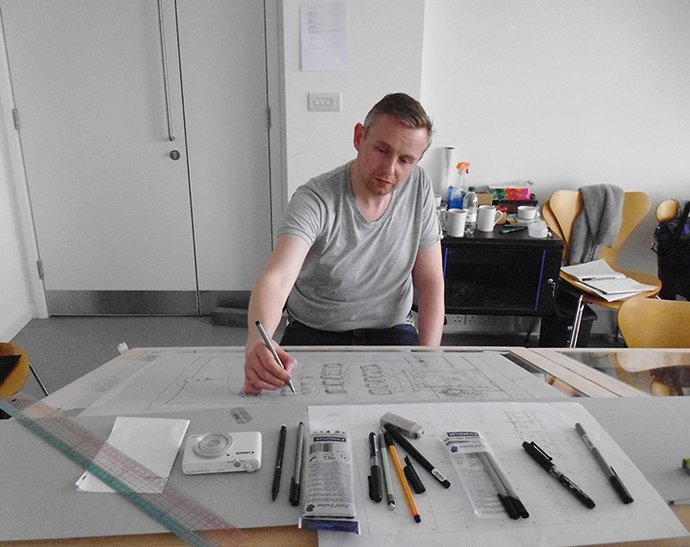
As the evening gathering of ‘drawers’ in late February wore on, through the to and fro of exchanged ideas, the notion of the kind of drawings we would make became quite clear in my mind. Emboldened, I said, ‘I can imagine the drawings’. Niall quickly retorted, ‘I’m glad you can!' It is hard, even for architects, to accurately describe a drawing in words: you just need to get on and make it. We didn’t try tests at the time, knowing we’d soon be in the drawing room, engaged and exploring.
I accepted and welcomed the fact that the image I held in my mind’s eye required me to be drawn into the project title: to lose myself. I almost felt goaded, but I enjoyed the anticipation that brought. I know, now with quite some experience, that I only really, truly find ideas when I’m engrossed and lost in the specific questions and possibilities of a project, away from distraction. The kind of drawing we would engage in achieved this – and then some!
By the time I entered the room, other drawers had made many tests and finished, recorded drawings were in production: the methodology was being refined. Yet there were still many questions and a kind of energetic tension in imagining the outcome. This manifested itself in the room as a kind of organised uncertainty: we know the process, but not fully where we’ll arrive. These conditions were perhaps just part of how we might try to understand a dementia sufferer’s condition. The not-knowing and the unlearning of established process.
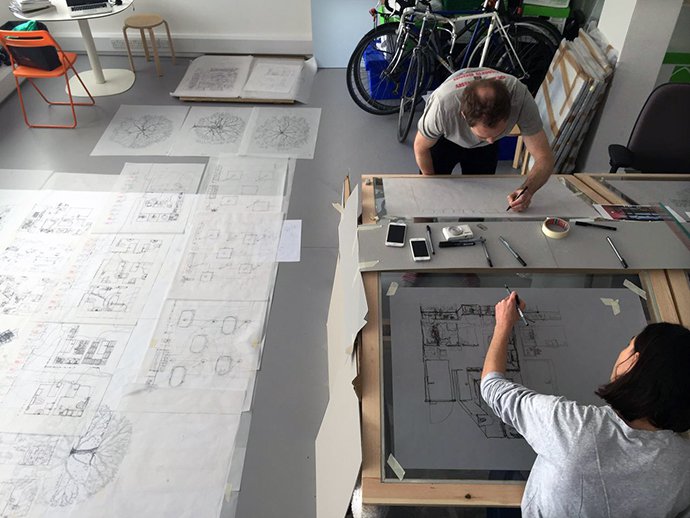
With a carpet of used tracing paper lining the floor, shoeless I walked the room and explored the work. The physical drawings, once recorded on film, instantly became part of an archive. Laid out to approximate the overall plan of the building, and accordingly the installation, the completed drawings were building to a density that characterised the scale of the endeavour.
I watched back a little bit of film, but instinctively wanted to avoid being too knowing or rehearsed. I was initiated into the precise aspect of the process: the filming. Bespoke glass-topped drawing boards held cameras below them in a fixed position. With tracing paper carefully positioned and camera running, the pen set off across the paper. Initially I was drawing a tree to add to the garden. Typical – the ‘test’ was better than the ‘finished’ version – don’t over think it!
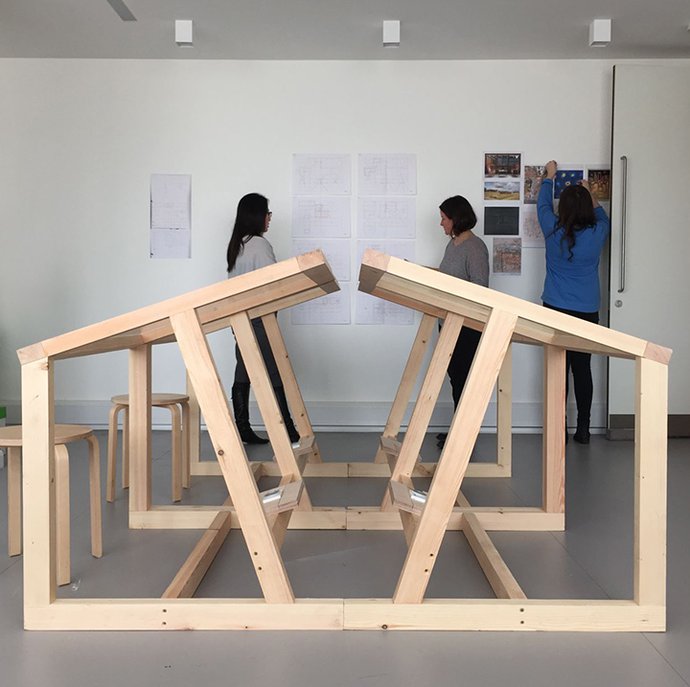
My early drawings were done alone in the room. Calm and quiet, the action of drawing a continuous line with the pen, with changing pace and form, induced an internal story-telling narrative: branches and leaves suggesting the rounded form of a tree, became the outline of countries spread across the sphere of the earth; seen from space. The wandering mind, drawing recollections of the objects we see around us, connects disparate times, places and objects through its visual triggers.
At some later point, when the room was busy for a while, some drawings of synapses were pinned on the wall, and the uncanny similarity between their form and trees deepened my fascination.
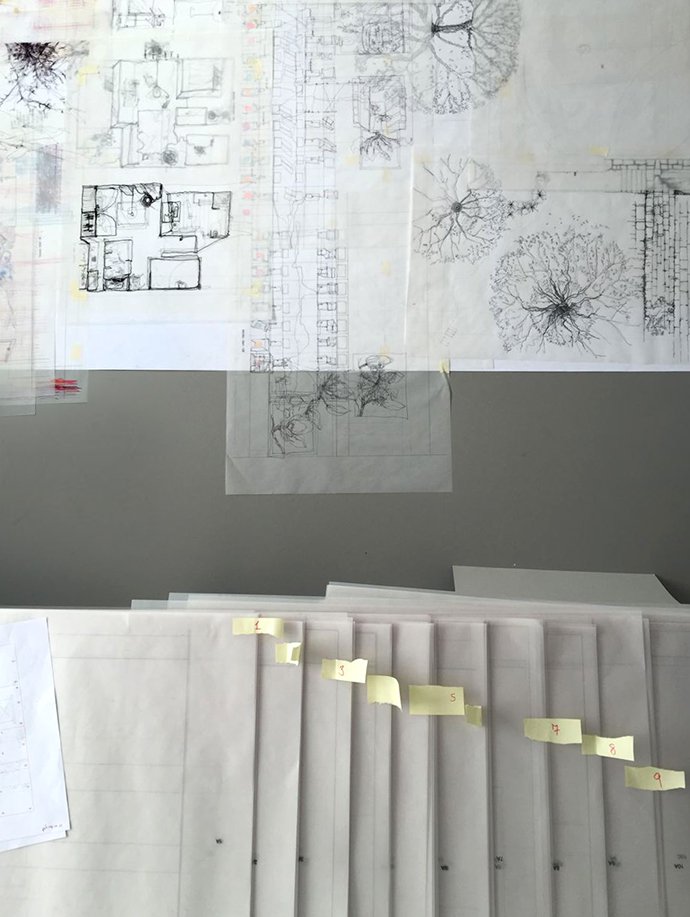
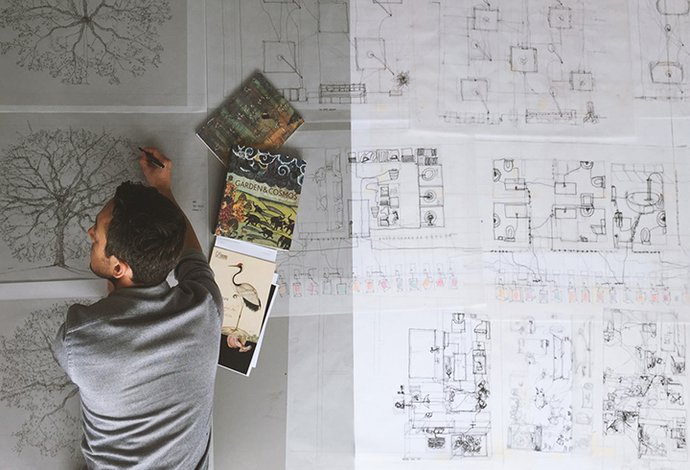
The act of drawing the building, which had been built from a fine network of pre-planned lines, oscillated between control and looseness. The line on the paper enters the room as the protagonist: drawing the edges of the room based on what is viewed, touched, moved, placed, used and acknowledged.
In sequence, members of staff used an office, making its walls, finding their chair, getting out files, using the computer, making calls, looking out the window, having a meeting, chatting to colleagues, going to the loo, watering the pot plants and making tea. The pen gave initial equivalence to each action, but over time the density increased to vividly convey occupation and use.
I also revisited rooms first drawn by someone else, adding detail and density to the occupation. Going back into other drawing was like visiting somewhere I vaguely remembered and understood, but where I had to establish my own understanding once more, by exploring and interpreting – applying my own meaning where none was tangible.
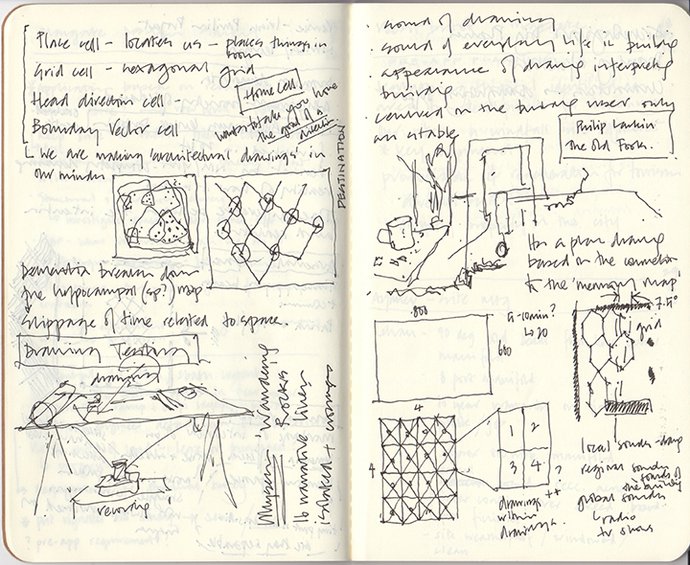
Gatherings of three or four made ‘social drawings’ in the communal spaces of the building. Sometimes I overheard the detailed narration as I drew separately and glanced over to see the animated goings-on of an eating-and-talking group emerging on the page, with multiple pens describing multiple actions.
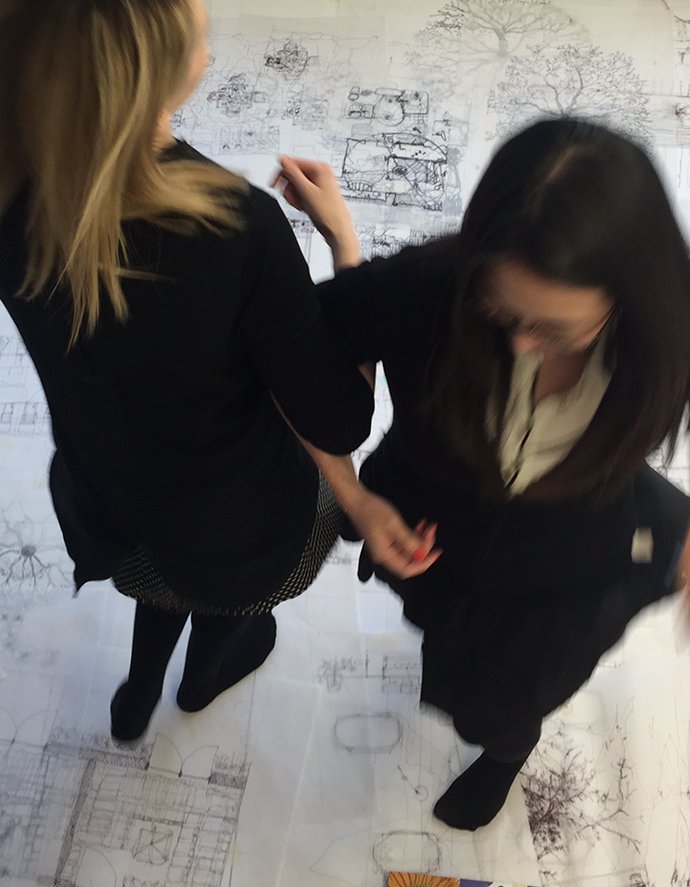
The social drawings reached a crescendo during a dance in the music room. With the grand piano playing, two couples: four people drawing, each with multiple pens in both hands, danced to an Irish Jig. The process was so infectious that Michiko and Claire danced across the drawings laid across the floor!
I look forward to seeing how the film encapsulates and integrates the range, variety and detail of the drawings that have emerged from the drawing room.
by James Daykin of Daykin Marshall Studio